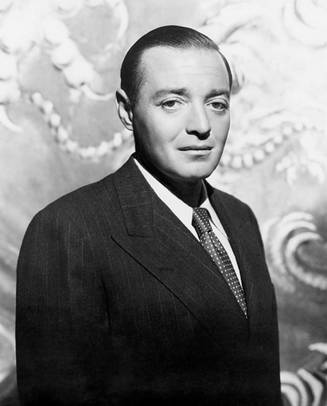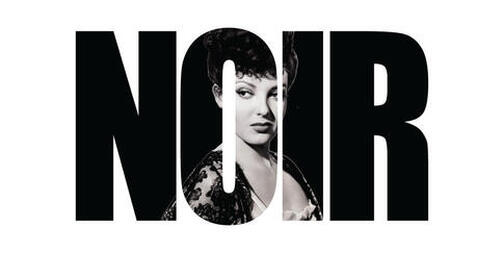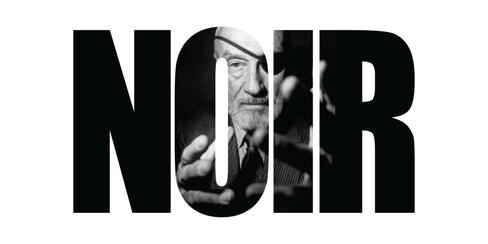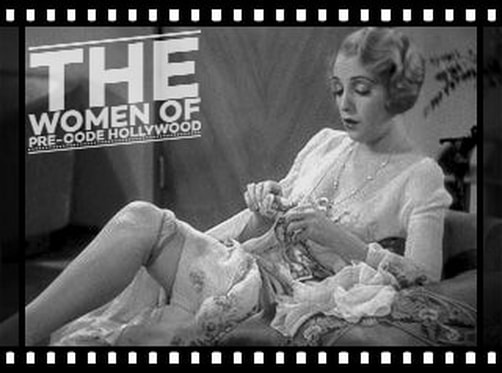PETER LORRE
AND FILM NOIR
Peter Lorre made a significant impact on the film noir genre through his iconic performances and his ability to portray complex and psychologically disturbed characters. Although not exclusively known for film noir, Lorre's work in several notable films within the genre left an indelible mark.
Lorre's portrayal of the disturbed and sinister Joel Cairo in "The Maltese Falcon" (1941) is a prime example of his impact on film noir. His performance as the enigmatic and unpredictable character added an element of intrigue and menace to the film. Lorre's unique voice, distinctive appearance, and his ability to convey a sense of internal turmoil made him a perfect fit for the morally ambiguous world of film noir.
In addition to "The Maltese Falcon," Lorre's performance as the psychopathic serial killer in "Stranger on the Third Floor" (1940) is often cited as one of the earliest examples of film noir. His portrayal of the deranged character brought a sense of unease and psychological tension to the film, which became a defining characteristic of the genre.
Lorre's ability to convey vulnerability and sympathy within his often villainous roles also contributed to the complexity of film noir.
Furthermore, Lorre's collaborations with director Fritz Lang, particularly in the film "M" (1931), can be seen as a precursor to film noir. "M" explores themes of crime, morality, and the dark underbelly of society, elements that would become prominent in the film noir genre. Lorre's portrayal of a child murderer in the film is haunting and remains one of his most memorable performances.
Overall, Peter Lorre's contributions to film noir cannot be overstated. His ability to embody morally ambiguous and psychologically complex characters added depth and intrigue to the genre. His performances showcased the darker aspects of human nature, providing a sense of unease and tension that became characteristic of film noir. Lorre's influence on subsequent actors and the overall atmosphere of the genre remains significant to this day.
Lorre's portrayal of the disturbed and sinister Joel Cairo in "The Maltese Falcon" (1941) is a prime example of his impact on film noir. His performance as the enigmatic and unpredictable character added an element of intrigue and menace to the film. Lorre's unique voice, distinctive appearance, and his ability to convey a sense of internal turmoil made him a perfect fit for the morally ambiguous world of film noir.
In addition to "The Maltese Falcon," Lorre's performance as the psychopathic serial killer in "Stranger on the Third Floor" (1940) is often cited as one of the earliest examples of film noir. His portrayal of the deranged character brought a sense of unease and psychological tension to the film, which became a defining characteristic of the genre.
Lorre's ability to convey vulnerability and sympathy within his often villainous roles also contributed to the complexity of film noir.
Furthermore, Lorre's collaborations with director Fritz Lang, particularly in the film "M" (1931), can be seen as a precursor to film noir. "M" explores themes of crime, morality, and the dark underbelly of society, elements that would become prominent in the film noir genre. Lorre's portrayal of a child murderer in the film is haunting and remains one of his most memorable performances.
Overall, Peter Lorre's contributions to film noir cannot be overstated. His ability to embody morally ambiguous and psychologically complex characters added depth and intrigue to the genre. His performances showcased the darker aspects of human nature, providing a sense of unease and tension that became characteristic of film noir. Lorre's influence on subsequent actors and the overall atmosphere of the genre remains significant to this day.
AVAILABLE FILMS:
ALL THROUGH THE NIGHT (1942)
ARSENIC AND OLD LACE (1944)
BACKGROUND TO DANGER (1943)
BEAST WITH FIVE FINGERS, THE (1946)
BEAT THE DEVIL (1953)
BLACK ANGEL (1946)
BOOGIE MAN WILL GET YOU, THE (1942)
CASABLANCA (1942)
CASBAH (1948)
CHASE, THE (1946)
CONFIDENTIAL AGENT (1945)
CONSPIRATORS, THE (1944)
CONSTANT NYMPH, THE (1943)
CRACK-UP, THE (1937)
CRIME AND PUNISHMENT (1935)
CROSS OF LORRAINE, THE (1943)
FACE BEHIND THE MASK, THE (1941)
HOLLYWOOD CANTEEN (1944)
HOTEL BERLIN (1945)
I WAS AN ADVENTURESS (1940)
I'LL GIVE A MILLION (1938)
INVISIBLE AGENT, THE (1942)
ISLAND OF DOOMED MEN (1940)
LANCER SPY (1937)
M (1931)
MAD LOVE (1935)
MALTESE FALCON, THE (1941)
MAN WHO KNEW TOO MUCH, THE (1934)
MASK OF DIMITRIOS, THE (1944)
MR. MOTO IN DANGER ISLAND (1939)
MR. MOTO TAKES A CHANCE (1938)
MR. MOTO'S LAST WARNING (1939)
MYSTERIOUS MR. MOTO (1938)
MY FAVORITE BRUNETTE (1947)
PASSAGE TO MARSEILLE (1944)
QUICKSAND (1950)
RAVEN, THE (1963)
ROPE OF SAND (1949)
STRANGE CARGO (1940)
STRANGER ON THE THIRD FLOOR (1940)
THANK YOU MR. MOTO (1937)
THEY MET IN BOMBAY (1941)
THINK FAST MR. MOTO (1937)
THREE STRANGERS (1946)
VERDICT, THE (1946)
YOU'LL FIND OUT (1940)
ARSENIC AND OLD LACE (1944)
BACKGROUND TO DANGER (1943)
BEAST WITH FIVE FINGERS, THE (1946)
BEAT THE DEVIL (1953)
BLACK ANGEL (1946)
BOOGIE MAN WILL GET YOU, THE (1942)
CASABLANCA (1942)
CASBAH (1948)
CHASE, THE (1946)
CONFIDENTIAL AGENT (1945)
CONSPIRATORS, THE (1944)
CONSTANT NYMPH, THE (1943)
CRACK-UP, THE (1937)
CRIME AND PUNISHMENT (1935)
CROSS OF LORRAINE, THE (1943)
FACE BEHIND THE MASK, THE (1941)
HOLLYWOOD CANTEEN (1944)
HOTEL BERLIN (1945)
I WAS AN ADVENTURESS (1940)
I'LL GIVE A MILLION (1938)
INVISIBLE AGENT, THE (1942)
ISLAND OF DOOMED MEN (1940)
LANCER SPY (1937)
M (1931)
MAD LOVE (1935)
MALTESE FALCON, THE (1941)
MAN WHO KNEW TOO MUCH, THE (1934)
MASK OF DIMITRIOS, THE (1944)
MR. MOTO IN DANGER ISLAND (1939)
MR. MOTO TAKES A CHANCE (1938)
MR. MOTO'S LAST WARNING (1939)
MYSTERIOUS MR. MOTO (1938)
MY FAVORITE BRUNETTE (1947)
PASSAGE TO MARSEILLE (1944)
QUICKSAND (1950)
RAVEN, THE (1963)
ROPE OF SAND (1949)
STRANGE CARGO (1940)
STRANGER ON THE THIRD FLOOR (1940)
THANK YOU MR. MOTO (1937)
THEY MET IN BOMBAY (1941)
THINK FAST MR. MOTO (1937)
THREE STRANGERS (1946)
VERDICT, THE (1946)
YOU'LL FIND OUT (1940)
VIDEO TRIBUTE
Peter Lorre

Peter Lorre was an iconic Hungarian-American actor born on June 26, 1904, in Rózsahegy, Austria-Hungary (now Ružomberok, Slovakia). He is best known for his distinctive appearance, unique voice, and his memorable performances in both European and American films. Lorre's real name was László Löwenstein, and he later anglicized it to Peter Lorre.
Lorre began his acting career on the stage in Vienna, Austria, where he worked in various theaters and gained recognition for his performances. He caught the attention of German film director Fritz Lang, who cast him in the role of the serial killer Hans Beckert in the highly influential film "M" (1931). This performance became one of Lorre's most celebrated and established him as a talented actor.
In 1933, with the rise of the Nazi regime in Germany, Lorre, who was Jewish, decided to leave the country and relocated to Paris, France, where he continued his film career. He starred in several French films, including "Crime and Punishment" (1935), before moving to the United States in 1935.
Lorre's arrival in Hollywood marked the beginning of his American film career. He made a notable debut in the crime thriller "The Man Who Knew Too Much" (1934), directed by Alfred Hitchcock. Lorre's role as the sinister Joel Cairo in "The Maltese Falcon" (1941) opposite Humphrey Bogart further solidified his status as a character actor in Hollywood. He continued to play memorable supporting roles in films such as "Casablanca" (1942), "Arsenic and Old Lace" (1944), and "The Verdict" (1946).
Lorre's distinctive appearance and unique voice made him a sought-after actor for roles that required a touch of mystery, intrigue, or villainy. He often portrayed complex and ambiguous characters, ranging from criminals to sympathetic figures. His ability to convey both menace and vulnerability added depth to his performances and made him a standout presence on screen.
Beyond his work in film, Lorre also appeared on television and stage. He had his own television series, "The Peter Lorre Mystery Theatre," in 1954, where he introduced and narrated suspenseful stories. He also returned to the stage and received critical acclaim for his performances in plays like "Arsenic and Old Lace" and "The Love of Four Colonels."
Unfortunately, Lorre battled personal demons, including addiction and health issues, throughout his life. He struggled with substance abuse, particularly with morphine addiction. Tragically, on March 23, 1964, at the age of 59, Lorre died of a stroke in Los Angeles, California.
Peter Lorre's unique talent and contributions to cinema have left a lasting impact. His distinctive presence, ability to portray complex characters, and memorable performances in films have made him an enduring figure in the history of both European and American cinema.
Lorre began his acting career on the stage in Vienna, Austria, where he worked in various theaters and gained recognition for his performances. He caught the attention of German film director Fritz Lang, who cast him in the role of the serial killer Hans Beckert in the highly influential film "M" (1931). This performance became one of Lorre's most celebrated and established him as a talented actor.
In 1933, with the rise of the Nazi regime in Germany, Lorre, who was Jewish, decided to leave the country and relocated to Paris, France, where he continued his film career. He starred in several French films, including "Crime and Punishment" (1935), before moving to the United States in 1935.
Lorre's arrival in Hollywood marked the beginning of his American film career. He made a notable debut in the crime thriller "The Man Who Knew Too Much" (1934), directed by Alfred Hitchcock. Lorre's role as the sinister Joel Cairo in "The Maltese Falcon" (1941) opposite Humphrey Bogart further solidified his status as a character actor in Hollywood. He continued to play memorable supporting roles in films such as "Casablanca" (1942), "Arsenic and Old Lace" (1944), and "The Verdict" (1946).
Lorre's distinctive appearance and unique voice made him a sought-after actor for roles that required a touch of mystery, intrigue, or villainy. He often portrayed complex and ambiguous characters, ranging from criminals to sympathetic figures. His ability to convey both menace and vulnerability added depth to his performances and made him a standout presence on screen.
Beyond his work in film, Lorre also appeared on television and stage. He had his own television series, "The Peter Lorre Mystery Theatre," in 1954, where he introduced and narrated suspenseful stories. He also returned to the stage and received critical acclaim for his performances in plays like "Arsenic and Old Lace" and "The Love of Four Colonels."
Unfortunately, Lorre battled personal demons, including addiction and health issues, throughout his life. He struggled with substance abuse, particularly with morphine addiction. Tragically, on March 23, 1964, at the age of 59, Lorre died of a stroke in Los Angeles, California.
Peter Lorre's unique talent and contributions to cinema have left a lasting impact. His distinctive presence, ability to portray complex characters, and memorable performances in films have made him an enduring figure in the history of both European and American cinema.
Quotes:
"All that anyone needs to imitate me is two soft-boiled eggs and a bedroom voice."
[on his first meeting with Alfred Hitchcock before he learned English] "I had heard that he loved to tell stories and so I watched him like a hawk, and when I was of the opinion he had just told the punchline of a story, I broke out in such laughter that I almost fell off my chair."
- Peter Lorre
Trivia:
According to Vincent Price, when he and Lorre went to view Bela Lugosi's body during Bela's funeral, Lorre, upon seeing Lugosi dressed in his famous Dracula cape, quipped, "Do you think we should drive a stake through his heart just in case?".
Was the very first James Bond villain; he played Le Chiffre in a 1954 version of Casino Royale on the television series Climax! (1954).
He convinced Humphrey Bogart to marry Lauren Bacall, despite the age difference. He did so by saying, "Five good years are better than none!".
When he arrived in Great Britain, his first meeting with a British director was with Alfred Hitchcock. By smiling and laughing as Hitchcock talked, the director was unaware that Lorre had a limited command of the English language. Hitchcock cast him in The Man Who Knew Too Much (1934). Lorre learned much of his part phonetically.
In the early '50s he became seriously ill with a malady that affected his glands, causing a metabolic change. After recuperating, he gained almost 100 pounds, which aggravated a chronic high-blood-pressure condition that permanently altered his appearance and necessitated constant treatment.
Immediately after M (1931), he received 310 film offers that all contained a similar role. However, he refused most of them in order to try not to get pigeonholed as a psychopath. unfortunately, it didn't always work out that way for him.
Appeared with Sydney Greenstreet in nine films: The Maltese Falcon (1941), Casablanca (1942), Background to Danger (1943), Passage to Marseille (1944), The Mask of Dimitrios (1944), The Conspirators (1944), Hollywood Canteen (1944), Three Strangers (1946) and The Verdict (1946).
Was the very first James Bond villain; he played Le Chiffre in a 1954 version of Casino Royale on the television series Climax! (1954).
He convinced Humphrey Bogart to marry Lauren Bacall, despite the age difference. He did so by saying, "Five good years are better than none!".
When he arrived in Great Britain, his first meeting with a British director was with Alfred Hitchcock. By smiling and laughing as Hitchcock talked, the director was unaware that Lorre had a limited command of the English language. Hitchcock cast him in The Man Who Knew Too Much (1934). Lorre learned much of his part phonetically.
In the early '50s he became seriously ill with a malady that affected his glands, causing a metabolic change. After recuperating, he gained almost 100 pounds, which aggravated a chronic high-blood-pressure condition that permanently altered his appearance and necessitated constant treatment.
Immediately after M (1931), he received 310 film offers that all contained a similar role. However, he refused most of them in order to try not to get pigeonholed as a psychopath. unfortunately, it didn't always work out that way for him.
Appeared with Sydney Greenstreet in nine films: The Maltese Falcon (1941), Casablanca (1942), Background to Danger (1943), Passage to Marseille (1944), The Mask of Dimitrios (1944), The Conspirators (1944), Hollywood Canteen (1944), Three Strangers (1946) and The Verdict (1946).




